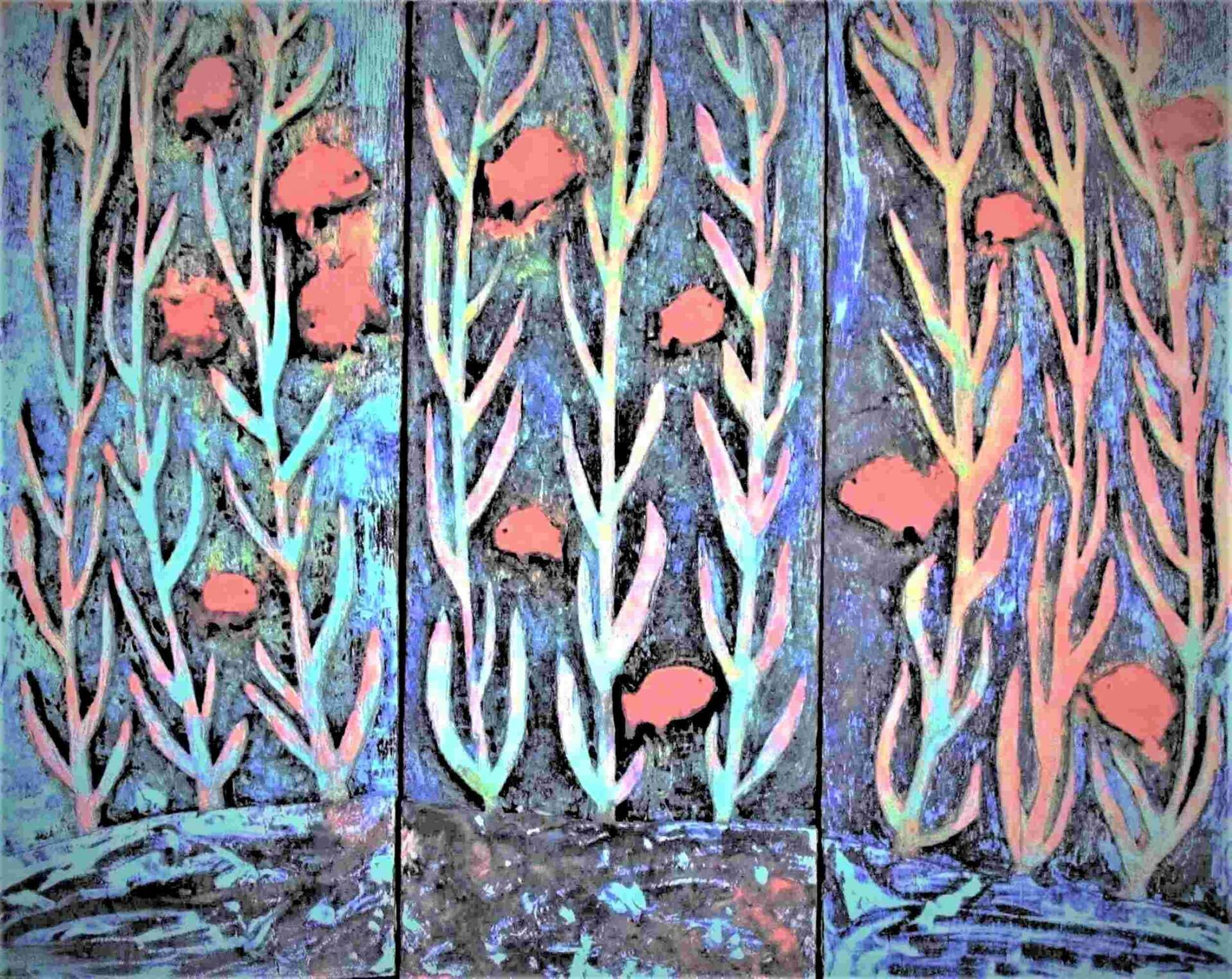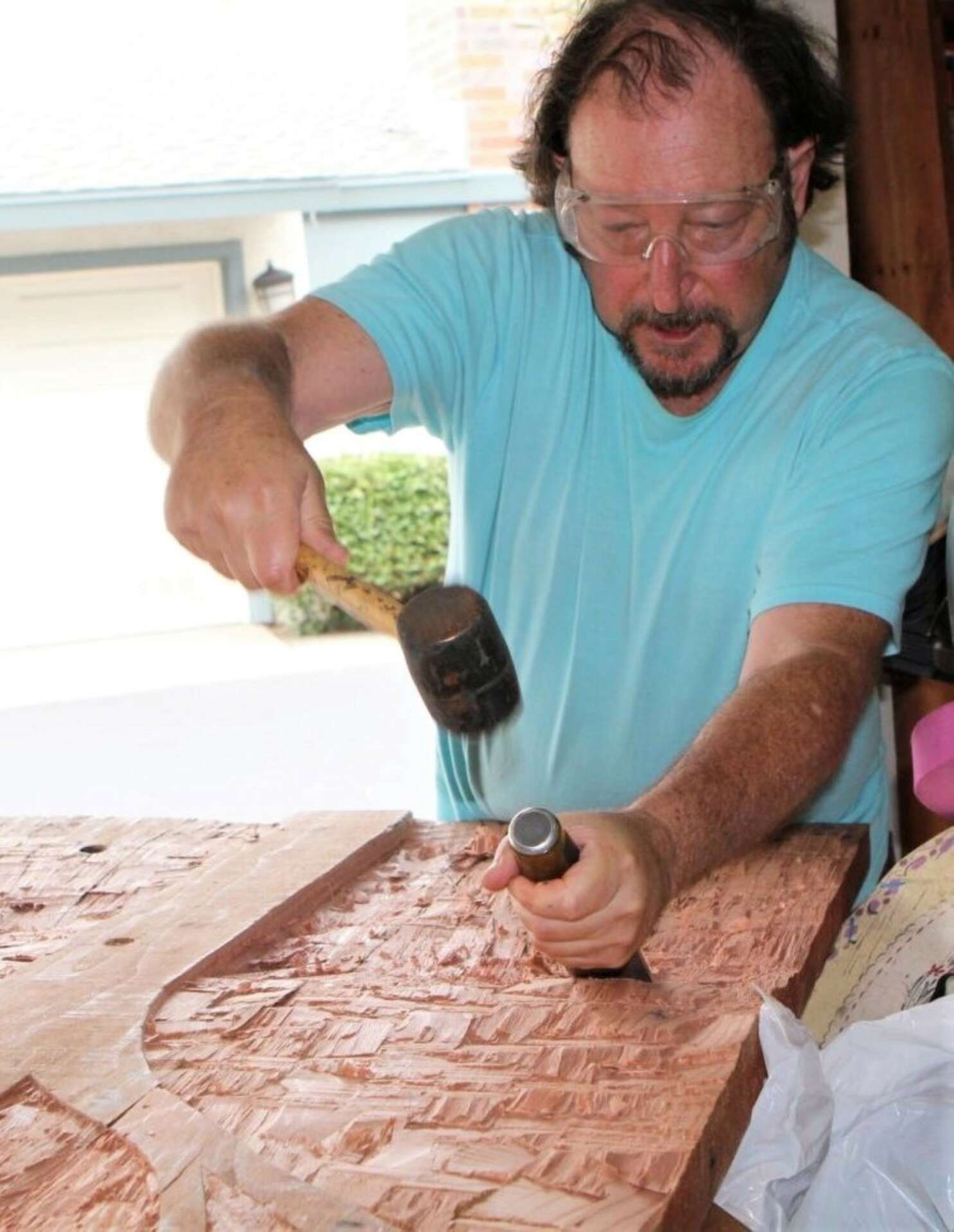We were lucky to catch up with Ed Whitmore recently and have shared our conversation below.
Alright, Ed thanks for taking the time to share your stories and insights with us today. How did you learn to do what you do? Knowing what you know now, what could you have done to speed up your learning process? What skills do you think were most essential? What obstacles stood in the way of learning more?
I work exclusively with the patina formed from oxidation of iron copper and bronze metal effects paints, a medium usually utilized for home improvement projects. In order to achieve the effects I desired, I needed to learn how to control the oxidation to achieve the desired saturation of color. Variables included how thickly to apply the paint, how many coats of paint to apply, how much chemical reagent to use. There was a lot of experimentation and a lot of trial and error. But I paid close attention to what approach I was taking and what outcomes were achieved. Eventually I was able to replicate results successfully. Now, in addition to applying paint to wood planks with a sponge brush, I splatter and pour paint directly onto the wood surface and thereby achieve tremendous saturation of color.


Ed, before we move on to more of these sorts of questions, can you take some time to bring our readers up to speed on you and what you do?
My work combines two unusual elements: hand chiseling of wood planks prior to painting (bas and sunken relief) and unusual medium (metal effects paint).
Iron copper and/or bronze powder is suspended in acrylic paint base which is applied to wood with sponge brush or poured directly into wood surface. Chemical reagent is utilized to oxidize the metal and voila, patina is formed, creating field of color in evocative shades of brown green and blue. As a self taught artist I was a bit insecure and uncertain about how and whether to put my work out there for others to view and purchase. Luckily a colleague showed me work that he was displaying in a local cafe. I was encouraged by the amateurishness of the piece and no longer felt intimidated since it was clear that compared to his, my own work was superior in concept and execution. I told myself that if John could display his work so could I, an approach which I found very liberating. I approached a local gallery and artist workspace who were very receptive and encouraging. I participated in several juried shows and eventually staged a couple of solo shows at that venue. Since then I have participated in hundreds of juried shows around the country and have staged numerous solo shows. My motto is nothing ventured nothing gained. And fortune favors the bold. After all, someone’s work has to hang on those walls, why not mine.


Can you share a story from your journey that illustrates your resilience?
After participating in several group shows and a few solo exhibits around San Diego, the opportunity arose to stage a solo exhibit in northern California. The gallery owner seemed a bit sketchy but it was a nice gallery in a cute little town within driving distance of San Diego so I went forward with staging the show. My misgivings were not misplaced. The gallery owner turned out to be unreliable and unprofessional. On the day of the opening she had not gotten it together to print out the identifying labels that I had provided, then decided posting pricing would be “tacky” but then did not have the price sheet handy to respond to customer inquiries. Needless to say, many potential sales opportunities were squandered. I soldiered on and staffed the gallery during its limited public hours. Despite my efforts, no sales were achieved and a tremendous opportunity was wasted. This negative experience notwithstanding, I continue to participate in juried group shows and even staged a solo exhibit in the New York metropolitan area last spring, where another test of my resilience took place as art center staff offered to help unload my van, then proceeded to damage sculptures by carrying them from the top instead of from the base. Fortunately I was able to repair most of them and the show was a smashing success.


Have you ever had to pivot?
After 5 years of participating in juried shows with few sales to show for it I have decided to pivot to art fairs. The cost to enter is greater but the attendees come specifically to view and potentially purchase artwork, unlike
shows in small galleries which draw local residents who are looking for something to do on a Saturday night and not necessarily all that interested in art. So far I have participated in one large fair (Art San Diego) where I was able to sell a large piece. Hoping to participate in more with similar results.

Contact Info:
- Website: http://edwhitmore.com/ed-whitmore/
- Facebook: https://www.facebook.com/edwhitmoreart/photos_by
- Other: https://www.saatchiart.com/studio/artworks https://artspaces.kunstmatrix.com/en/exhibition/9011938/the-mind-of-ed
Image Credits
all photos of art by Ed Whitmore photo of Ed Whitmore by Corey Levitan, La Jolla Light


